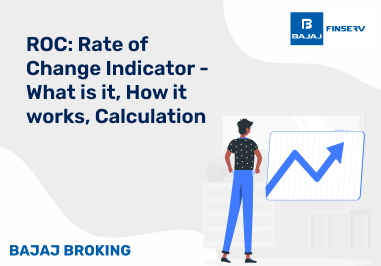When you look at the daily news and see markets rising or falling, a big part of that story often comes down to what foreign investors are doing. These movements—called FII inflows and outflows—play a critical role in shaping the direction of Indian stock markets. Understanding them is not just useful for economists or brokers. It helps you make more informed investment decisions, especially if you are an active market participant or simply curious about where the money is going.
What are FII inflows?
Before diving into causes, you should understand what FII inflows actually are. Foreign Institutional Investors (FIIs) are entities like hedge funds, pension funds, and mutual funds that invest in a country's financial markets. When they pour money into Indian equities or debt, it is called an inflow. These inflows often reflect investor confidence in the Indian economy and can have a significant impact on asset prices, market sentiment, and currency strength.
Key points about FII inflows:
Let us understand the key characteristics of FII inflows and why they are watched so closely by market participants like you.
Capital coming into India
FII inflows refer to the money entering Indian financial markets from foreign institutions. You will typically see these flows in sectors like banking, IT, or large-cap stocks that offer liquidity and visibility.
These inflows can boost stock prices and strengthen the Indian rupee.
Market confidence indicator
Higher FII inflows usually suggest that foreign investors are confident in India’s economic outlook, governance, and earnings growth.
This confidence often attracts more domestic investment too, further fuelling the market.
Linked to global liquidity
When global markets are flush with liquidity—due to low interest rates or quantitative easing—more funds flow into emerging markets like India.
These are periods where you often notice a surge in market activity and foreign buying.
What causes FII Inflows?
Now that you know what FII inflows mean, let us explore what makes FIIs invest heavily in India. These triggers are often combinations of macroeconomic stability, policy signals, and global capital conditions.
Main reasons FIIs invest in India:
Each of these factors directly impacts how much foreign money enters the Indian market. Here is what you should keep an eye on.
Strong economic indicators
When GDP growth, inflation control, and fiscal discipline are in place, FIIs are more likely to invest in India.
These indicators build long-term trust and predictability in the market.
Stable political environment
A stable government with clear economic policies attracts consistent foreign flows. Uncertainty, on the other hand, discourages large investments.
Your market returns often correlate with political stability.
Attractive interest rate differentials
If India offers better interest rates than developed markets, FIIs prefer Indian bonds and debt instruments.
This higher yield, when adjusted for risk, draws fixed-income investors into the country.
Rupee stability
A stable or appreciating rupee assures FIIs that their investments will retain value when converted back to their home currency.
Currency fluctuations often make or break foreign investors’ confidence.
Reforms and ease of doing business
Market reforms like GST, IBC, or tax rationalisation act as confidence boosters.
These steps often reduce friction for investors and increase capital inflows.
What are FII Outflows?
FII outflows occur when these same foreign institutions start pulling money out of Indian markets. It could be due to domestic reasons, or broader global concerns. For you as an investor, sudden outflows can result in market corrections or even prolonged downtrends.
Important facts about FII outflows:
Let us explore the key traits and signals associated with FII outflows.
Capital exits from Indian markets
When FIIs reduce or withdraw their holdings in stocks or bonds, it is recorded as an outflow.
This can cause short-term volatility or prolonged selling pressure.
Triggered by risk aversion
Global risk events—such as wars, recessions, or banking crises—often lead to capital flight from emerging markets.
Investors seek safer assets, which pulls money away from Indian markets.
Impact on rupee and indices
What causes FII Outflows?
Understanding the triggers behind outflows can help you prepare for them in advance. These usually involve global monetary tightening, domestic uncertainty, or other capital market trends.
Key drivers of FII outflows:
If you notice any of the following conditions in news headlines, it is wise to review your exposure to volatile sectors.
Interest rate hikes in the US
When the Federal Reserve increases rates, US bonds become more attractive. FIIs often pull out from Indian markets to reinvest back home.
These actions usually impact equities first, followed by the currency.
Weak corporate earnings
If Indian companies post poor quarterly results, FIIs may lose confidence in earnings growth and exit their positions.
Earnings disappointments often signal long-term issues.
Regulatory uncertainty
Unexpected changes in tax rules, capital gains policies, or foreign ownership limits can deter FIIs.
You should stay updated with SEBI and RBI announcements during budget cycles.
Geopolitical instability
Conflicts, sanctions, or trade wars create uncertainty that prompts foreign funds to reduce exposure to riskier regions.
This includes India, especially if Asia-Pacific tensions rise.
Key Factors Behind Fii Outflows from Emerging Economies
Emerging markets like India often bear the brunt of global risk-off events. When you understand what drives outflows across these economies, you can better navigate volatile phases.
Global monetary tightening
Strengthening US dollar
High inflation and fiscal deficit
Risk-off sentiment globally
Global slowdowns, credit crises, or major bankruptcies create fear-driven exits.
You might see institutional investors shifting to gold, US treasuries, or cash.
Impact of Fiis on the Indian Stock Markets
Whether they enter or exit, FII actions influence your portfolio directly. Let us break down the typical effects on the market.
Price volatility
FII buying tends to inflate prices, while heavy selling creates corrections.
You may notice that large-cap stocks are more affected by this.
Sectoral focus shifts
FIIs rotate funds between sectors—like banking, energy, or technology—based on performance expectations.
Your sectoral bets should align with this trend to stay relevant.
Liquidity increase
Currency fluctuations
Inflows boost the rupee, while outflows weaken it. These movements impact import-heavy industries.
It is useful to track both FII data and forex rates when making investment decisions.
Conclusion
FII inflows and outflows are not just figures on a screen—they are signals that shape the direction of Indian markets. As an investor, being aware of these movements helps you make timely and strategic choices. Whether it is foreign optimism about India’s growth story or panic selling due to global shocks, staying informed allows you to manage risk, spot opportunities, and remain steady in unpredictable markets.














